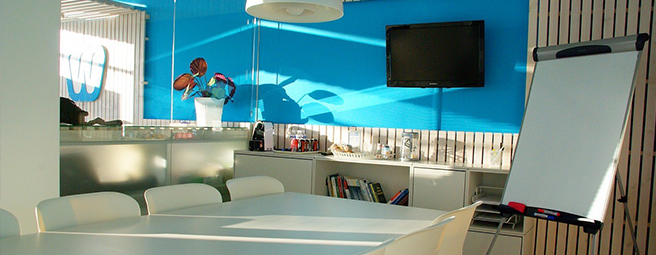
Coworking Spaces: Changing the Game for Business Professionals
Having a workspace is crucial to being productive. Whether you’re building handmade furniture or building a corporate empire, you need someplace where you can get to work. It’s almost like a second home. That’s likely part of the reason why, when you don’t have a workspace, you feel a little homeless.
In the past, companies large and small have shelled out thousands to lease office spaces, and even more to buy or build their own. It was an unavoidable part of the package deal: if you wanted to work, you needed a place to do it, and you needed space for all the people who would work with you. Those who couldn’t afford the floor space had to work out of their own homes and looked a lot less legitimate to their clients back then because of it.
Then the internet arrived and disrupted status quos all over the place. Suddenly it was possible for coworkers to coordinate and collaborate nearly instantaneously, even over great distances. Employees began to telecommute, working from home all or part of the time, in small numbers at first. It has quickly escalated, though; 65% of businesses already allow employees to work remotely, at least part of the time.
And, with a new generation filling in the ranks of working men and women, work methodologies are changing to match their personalities. Millennials prefer open spaces, coworking environments, and work schedule flexibility, and many companies (especially startups) are obliging them to keep turnover rates low.
So, what does this mean for business as a whole? It means that a new solution is needed for the workplace problem. With more and more employees working remotely at least part of the time, the dedicated office space is being used less and less, which means there’s less justification for paying the rent and keeping the lights on. What, then, is a company to do, if not rent their own space?
The answer is leverage and on demand and workspace for meetings or coworking.
This article takes a look at how the traditional office space is falling into obsolescence as virtual and coworking office space solutions rise to prominence. By the time you’re done reading this, you should know the answer to any of your questions about using a workspace on demand, and whether it’s a solution that should replace your business’s current set up.
The Traditional Office Space
Since at least the birth of mercantilism, there have been office spaces. It’s served society pretty well until now. They’ve certainly been used to accomplish some pretty great things. That was all before modern communications technology, though, and the advent of the digital age. Thanks to the internet, the world is both bigger and smaller at the same time. Now, the world is our workplace, and we’re no longer tethered to our cubicles.
The traditional office space—real estate dedicated to a single business—is becoming less and less relevant as the days go by, for a number of reasons. First, the internet and increasingly powerful digital devices have made it possible to accomplish more and more tasks remotely. Second, “digital natives” already use technology and smartphones to conduct many tasks, making the learning curve for digital workloads much less steep.
E-commerce has made things drastically different for retailers, who now no longer need to maintain brick-and-mortar stores to facilitate purchases. They can store all their products in a warehouse (or even a storage unit) and just ship things out when an online order comes in, saving money on renting space for a storefront.
Then, of course, there’s the cost of obtaining, setting up, and maintaining traditional offices. You spend time looking for a place, you pay for it monthly whether you buy it or lease it, you have to furnish it, you have to set up and pay for utilities, and on top of that, you’re responsible for the physical security of the premises. It’s a lot to pay for, especially when you’re a growing business, or you’re only using the office some of the time. What’s more, traditional office spaces are typically located in the heart of cities, contributing to long commutes and, by association, carbon emissions and pollution.
The main catch is that most businesses still need a physical location for a couple of things. They need to be able to host clients, business partners, investors, etc. Frequently, they need a non-residential address for professionalism, mail, and licensing purposes. And they sometimes need a space away from the house that they can dedicate to work for hours, days, or weeks at a time. As a result, there has been an increasing number of coworking and shared workspaces built-in the last few years to offer an alternative to the traditional option.
Workspace on Demand
This alternative goes by several different names: virtual offices, workspace as a service, coworking office spaces, shared work spaces, and so forth. All of these terms are referring generally to the same thing, although the features, services and amenities can differ. Basically, it’s an office space that’s owned, furnished, and maintained by a different company and rented out on an as-needed basis.
These instant office spaces usually come outfitted with desks, office supplies, office equipment, front desk staff, kitchenettes, bathrooms, and more. Best of all, the renters aren’t locked into a lengthy commitment and aren’t responsible for any of the overhead. They come and go as they please, and they only pay for what they use.
There are a few subtle differences between some of these workspace models. Coworking emphasizes community. It’s about getting people who work for different employers together in the same space. This shared workspace model works like an open floor plan office, with the exception that there’s a melting pot of different businesses rubbing shoulders with each other.
Workspace on demand is a space you rent that’s dedicated to your company. Sometimes this is an entire location, and sometimes it’s a segment of one. Either way, you’re not hobnobbing it with other companies. You and your crew work in peace, segregated from other organizations as if it were a traditional office. Workspace on demand is also more likely to have a broader (and deeper) set of amenities, as its custom-fit to the business using it.
In other words, a coworking space is often used by freelancers, part-timers, and other small groups. Workspace on demand may be better suited for more established businesses that require more amenities and services as well as more privacy.
Both coworking and workspace as a service are rising in popularity rapidly, for several reasons:
- Millennials are more comfortable with virtual workplace environments
- Increased affordability (i.e. pay as you go), and flexibility
- It gives you the option to outsource many administrative tasks
- The self-employed workforce is expanding
- These typically are fully serviced offices
- It gives larger businesses the ability to open a local branch in a different city
- Having a physical location means you have a mailing address and a place for meetings, without the baggage that comes with traditional offices
- Entrepreneurship thrives on the freedom of virtual offices, which allow for collaboration & innovation while providing many of the same perks as a physical office
That said, these kinds of workspaces aren’t for everyone. Some industries (like industrial labor) have to have a place to do their manufacturing, which means they need more than just office space. Bigger companies will still see value in maintaining a permanent office space (though they can supplement this with shared and on demand workspaces, as mentioned above). And not every coworking space will have the amenities you need (which is what makes workspace on demand so appealing).
Which Should I Use for My Business?
First, ask yourself, “Is a rent-able workspace well-suited for my industry?” and “Does a rent-able workspace offer the services and amenities I need to serve my clients?” Then, ask yourself if you think the freewheeling community of a coworking space is a good place to be creative and find inspiration. If it is, then it might be a good fit; just be sure you do your research and find a community that your business will be comfortable in. If you truly want flexibility and customization without having to pay for permanent office space, then go with workspace on demand.
Here are some industries well-suited for workspace on demand:
-
-
- Ecommerce
- Consulting
- Startups
- Self-employed workers
- Entrepreneurs
- Small-to-medium sized companies (10-50 employees)
- Large corporations and Fortune 1000 companies
-
If you think you’re ready to ditch the home or leased office, and want to know more about virtual offices and workspace on demand, no matter where you are on the globe, contact Davinci Meeting Rooms today.

Categories
Subscribe to Our Blog
Archive

- April 2025
- March 2025
- February 2025
- January 2025
- December 2024
- November 2024
- October 2024
- September 2024
- August 2024
- July 2024
- June 2024
- May 2024
- April 2024
- March 2024
- February 2024
- January 2024
- December 2023
- November 2023
- October 2023
- September 2023
- August 2023
- July 2023
- June 2023
- May 2023
- April 2023
- March 2023
- February 2023
- January 2023
- December 2022
- November 2022
- October 2022
- September 2022
- August 2022
- July 2022
- June 2022
- May 2022
- April 2022
- March 2022
- February 2022
- January 2022
- December 2021
- November 2021
- October 2021
- September 2021
- August 2021
- July 2021
- June 2021
- May 2021
- April 2021
- March 2021
- February 2021
- January 2021
- December 2020
- November 2020
- October 2020
- September 2020
- August 2020
- July 2020
- June 2020
- May 2020
- April 2020
- March 2020
- February 2020
- January 2020
- December 2019
- November 2019
- October 2019
- September 2019
- August 2019
- July 2019
- June 2019
- May 2019
- April 2019
- March 2019
- February 2019
- January 2019
- December 2018
- November 2018
- October 2018
- September 2018
- August 2018
- July 2018
- June 2018
- May 2018
- April 2018
- March 2018
- February 2018
- January 2018
- December 2017
- September 2017
- June 2017
- April 2017
- October 2016
- July 2016
- May 2016
- April 2016
- February 2016
- November 2015
- September 2015
- February 2015
- January 2015
- December 2014
- November 2014
- October 2014
- August 2014
- July 2014
- July 2013
- May 2013
- February 2013
- December 2012
Talk to an expert
Want help finding the ideal meeting room? Give us a call
Book the Perfect Meeting Room Now
Find a Meeting Room








